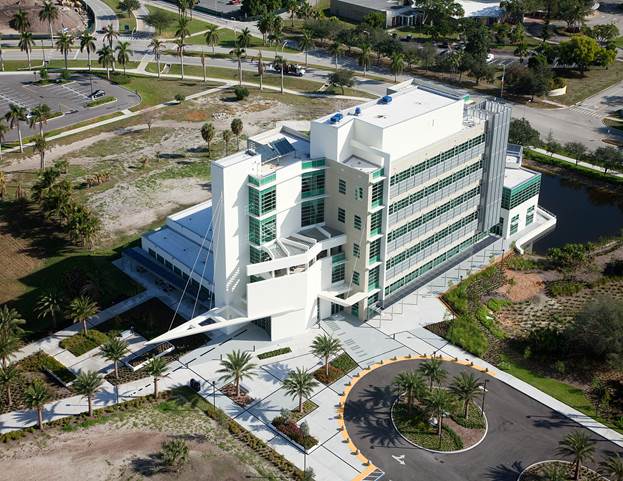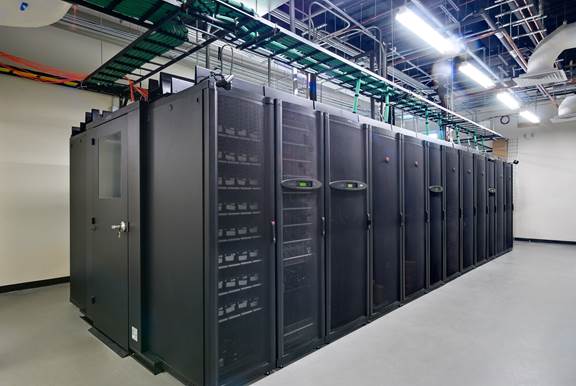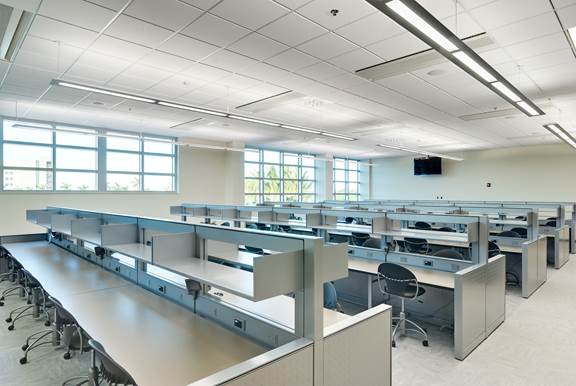Key Takeaways
- To meet the high expectations of its engineering students, Florida Atlantic University's College of Engineering and Computer Sciences launched a desktop virtualization project to give students access to personalized data and coursework on any device at any time or place.
- In addition to achieving its goals of offering high-performance mobile workspaces and reduced power consumption, the project reduced the typical weeks-long application upgrade process to less than 24 hours.
- Desktop virtualization also frees desktop administrators from mundane support tasks and lets them more creatively design and deliver workspaces.
- Although the project's initial expenditures were almost twice that of a typical PC refresh project, CECS has lowered its desktop upgrade costs by about $50,000 per year.
Florida Atlantic University (FAU) opened in 1964 as the first public university in southeast Florida and the first university in the nation to offer only upper-division and graduate-level courses. Today, the university serves nearly 30,000 undergraduate, graduate, and medical students at 10 colleges located across Boca Raton and five satellite campuses.
Like many academic institutions across the country, FAU is faced with making its educational programs more relevant and applicable to students' expectations, particularly regarding the use of technology and social media in support of their practical academic and career goals. Students expect to access their learning resources anytime, anywhere, and on any device they choose. They also expect their formal education systems to dovetail and integrate seamlessly with online tools such as Twitter, GoogleApps, and Facebook, as well as with online learning offered through sites such as Coursera, Udacity, and iTunes University.
These expectations are particularly strong within FAU's College of Engineering and Computer Sciences (CECS), which offers 10 undergraduate and graduate degree programs under the auspices of three departments: Civil, Environmental and Geomatics Engineering, Computer and Electrical Engineering and Computer Science, and Ocean and Mechanical Engineering. To meet the needs of the engineering program's faculty, students, and researchers, the CECS IT staff supports applications such as SolidWorks, Autodesk, MATLAB, Advanced Design System (ADS), ArcGIS, and ANSYS.
Why Implement a VDI?
Desktop virtualization delivers content and e-learning through the cloud. Flexible and unshackled from hardware and operating system limitations, desktop virtualization lets desktop administrators design a connected, user-centric learning model in which software, data, cloud, and other resources are centrally located, yet can be tailored and delivered to students based on their identity — wherever, whenever, and however they want to access them. This frees students from the confines of location; it also integrates their personal preferences and cloud-based resources. Because desktop virtualization shapes student workspaces "on-the-fly," they can be adjusted immediately in response to feedback from faculty, advisors, and other collaborators. Desktop virtualization also lets desktop administrators shift from mundane support tasks to more creatively design and deliver workspaces.
FAU's CECS IT staff was well aware of the transformative powers of virtualizing desktops and was eager to virtualize its student, faculty, and staff workspaces — no small task given the heavy graphics use — and data-intensive CAD, simulation, and 3D-based engineering applications that its engineering students rely on.
A major reason for the move to virtual desktop infrastructure (VDI) was the need for students to collaborate on engineering projects. An impediment to this, however, was the extremely large file sizes output by CAD and simulation applications. In the past, students had to resort to USB sticks to carry project files with them, but this was an unsatisfactory approach for both students and faculty. Often the file sizes exceeded the limits of the USB sticks, which were also subject to loss and corruption and not easily shared.
A main aspect of the VDI implementation was that student work files could be easily stored on disk in the data center, ensuring that they not only had adequate storage for the file size, but that teams of students could access them simply by logging in to their VDI sessions. Who had access to the files was controlled by filters within ProfileUnity to prevent unauthorized use. In addition, the files were backed up by routinely scheduled backup maintenance and could be restored fairly easily in the event that a working file was lost or corrupted.
FAU's CECS IT staff embarked on an inaugural VDI in 2009 to transform the engineering computing environment. This project, the first of its kind at FAU, was launched in the context of FAU's opening a platinum-level green building (figure 1) with a data center facility (figure 2) to reduce energy consumption and showcase engineering on display.

Photo by Smith Aerial Photos, all rights reserved.
Figure 1. The new platinum-level green building at FAU

Photo courtesy of LEO A DALY and Stuart Gobey Photography, all rights reserved.
Figure 2. The server room in the new building
Goals of Virtualization
FAU CECS supports as many as 2,500 students at any given time. This dynamic group of students needs high-performance workspaces that deliver graphics- and data-intensive engineering applications, along with user personalization and a separate "Z" drive to store each student's extremely large work files in the FAU data center. Prior to the virtualization initiative, students worked on Dell PCs and stored their work output files on USB sticks. However, the Dell PCs could not be personalized because they were shared systems. In addition, the PCs ran Windows XP; by 2009, CECS IT staff members knew they needed to migrate to Windows 7 to continue supporting the most current versions of applications, which their faculty demanded.
The CECS staff's initial goals were to
- reduce energy consumption by moving from full PC desktops to thin client and zero client hardware in the engineering labs;
- migrate successfully from Windows XP to Windows 7 OS for all desktops;
- offer each student a personalized workspace that retained all user and application settings from login to login, which would provide a secure "follow-me" desktop that could be accessed from any location without compromising FAU systems; and
- offer each student a personalized Z drive (located in the data center), with adequate storage for his or her work files.
Status of VDI Implementation
The FAU CECS VDI project is well into production. The virtualization infrastructure supports about 330 concurrent users, which is more than adequate for the roughly 2,500 students that the college supports at any given time.
The project's total initial budget was $450,000, including licenses, servers, storage, client devices, and the very high-end graphics accelerators required due to the graphics intensity of the engineering department's applications. The CECS staff decided to virtualize their desktops on VMware View running on HP blade servers in the data center supported by HP Lefthand and Dell Compellent SSDs Storage Center. Students access their workspaces through HP eVGA and Dell thin and zero clients located in labs (figure 3) across three campuses. Students can also access their workspaces remotely with the VMware Horizon View security server.

Photo courtesy of LEO A DALY and Stuart Gobey Photography, all rights reserved.
Figure 3. New computer lab
Early in the project, CECS IT staff members experimented with persistent virtual desktops — that is, with assigning specific virtual machines to specific users. However, staff members quickly realized this would be cost prohibitive and achieve neither the green results nor the performance goals targeted. They therefore moved to a non-persistent, stateless architecture in which students use pools of desktop virtual machines. Upon login, each student is assigned a "pristine," non-personalized VM for the session's duration. After logoff, the VM returns to the pool and its "pristine" state. This approach supports extra security because no student activities are ever saved to the desktop.
Liquidware Labs ProfileUnity replaced Roaming Profiles to provide scalable user management and personalization. It also reduced student logon times. Further, all students' user profiles, configurations, and application settings are managed by ProfileUnity, which delivers personalization to the non-persistent VM assigned to students at logon. Today, students' desktop user experience rivals that of a traditional physical PC, with all of their user information and data safely secured in the FAU data center.
CECS staff currently maintain six master gold desktop images to support the engineering curricula. Figure 4 shows the new engineering lab in the green building.

Photo courtesy of LEO A DALY and Stuart Gobey Photography, all rights reserved.
Figure 4. New engineering lab
Challenges and Resolutions
The VDI project faced and addressed four key challenges.
- First, the CECS IT staff was an early adopter of desktop virtualization, and VMware View desktops had a steep learning curve. A lot of experimentation was required to design the right desktop images and architecture. Staff members finally settled on non-persistent VMware View desktops coupled with personalization provided through ProfileUnity.
- Second, FAU's network structure — specifically the DHCP server — was inadequate for desktop virtualization and required an eight-fold expansion to provide the needed resources.
- Third, early on, the storage infrastructure required upgrading to address boot storms caused by both the number of students logging in at the same time and the very high levels of I/O required by applications.
- Finally, engineering students are "power" users of virtual desktops and CAD, and simulation and 3D applications are not considered virtualization friendly. Resolving this issue required high-level graphics resources.
Impact of Virtualization at FAU
Postsecondary institutions were quick to realize the benefits of desktop virtualization and are among the technology's early adopters, along with healthcare, government, and finance according to a recent article in BizCloud. According to the same article, many organizations have avoided the migration to virtual desktops, largely because of cost of storage. Although it's true that license costs for virtual desktops are fixed, other costs, such as for storage, servers, endpoint clients, and networking hardware, are flexible, and capacity planning is key to making sure these costs remain in line with the actual needs of the project's users.
FAU CECS' original project was budgeted in 2009 at approximately $450,000, which was almost twice as much as a typical PC refresh project at that time. Although this was a large upfront capital investment in new software and hardware, the team has lowered its investment in subsequent desktop upgrades/refreshes by about $50,000 per year and has also reduced power consumption. In addition, the CECS IT staff has seen significant soft productivity improvements as students experience fewer problems and IT administrators spend much less time on break/fix tasks and provisioning new desktops. Another major gain is the IT staff's ability to rapidly install and deploy new applications — a major boon that lets professors introduce new software within 24 hours, replacing a heavily scheduled process that had required weeks.
Project Benefits
The CECS staff achieved its goal of offering personalized, high-performance workspaces that students and faculty could access at off- and on-campus locations. The project also lets students use many different devices — supporting a BYOD strategy — because VMware View clients are compatible with Android, iOS, and Windows clients. Students' user profiles, settings, and all work files are now stored in the data center, where they are secured and backed up regularly.
The CECS desktop virtualization initiative has also realized other benefits to date:
- The project achieved FAU's green goals by replacing traditional PCs with thin and zero desktop clients. In addition, it reduced the data center's footprint by replacing individual IBM workstations and servers with SuperMicro blades.
- CECS staff can now easily provision high-performance workspaces to researchers on request; researchers can use the workspaces as long as they need them, then return them to the pool. This reduces procurement time from weeks to hours.
- CECS staff spend less time traveling to campus locations to upgrade and/or repair and replace individual hardware. All desktops are centrally managed from the data center.
- The use of non-persistent desktops offers additional security in that all student activities are wiped out after a session completes, which helps prevent viruses and other attacks on system resources. Also, because all desktop sessions run in the data center, students can easily log in to get a fresh desktop without losing their work if a particular client breaks or loses power.
- In the past, application changes had to be scheduled between semesters and required mounting application upgrades to a ghost image on a Symantec server and pushing the changes out to all desktops; this process could take up to a week to complete. The desktop virtualization project has replaced this process with more frequent and rapid application upgrades by updating, recomposing, and pushing out the VMware View master images in less than 24 hours.
- Other FAU colleges are now studying the CECS project, with plans to apply the virtualization technology to their own operations.
Deployment Results
Postsecondary institutions considering desktop virtualization would be wise to study the experience of early adopters such as FAU CECS. Deploying a VDI is a laborious and costly task, and institutions should not enter the process without detailed planning. As with FAU, a VDI project's goals should align with the organization's long-term goals.
The outcomes for different organizations will be as varied as their goals, but typical results should include
- increasing faculty and student productivity;
- increasing IT staff productivity;
- increasing security of data and overall IT software resources;
- reducing operating costs over time as licensing costs are recaptured and hardware PC refresh costs are reduced; and
- fostering learning and collaboration through new technologies, which are easier to introduce.
Although desktop virtualization costs more in the short term than using physical desktops, it plays a critical role in reducing the total cost of ownership over time. It also modernizes education delivery to keep pace with the demands of technologically sophisticated consumers.
© 2013 Jason Mattox and Pooran Rambharose. The text of this EDUCAUSE Review Online article is licensed under the Creative Commons Attribution 3.0 license.
